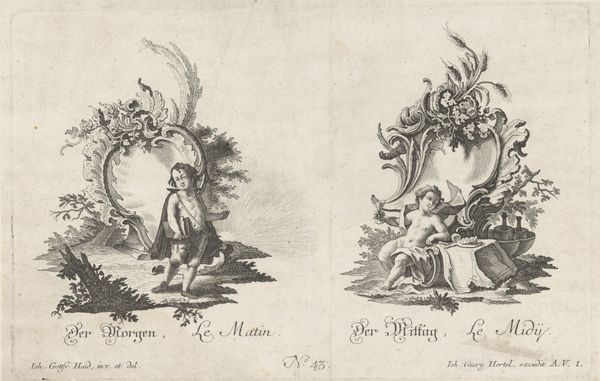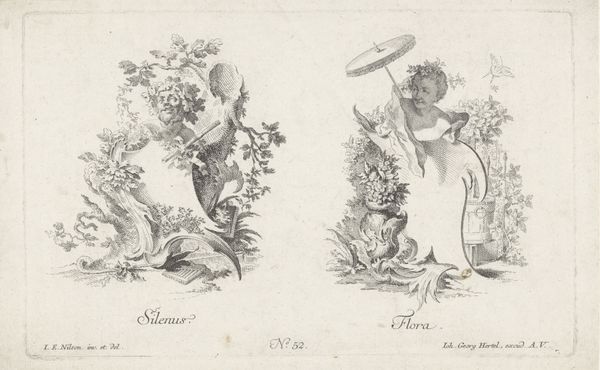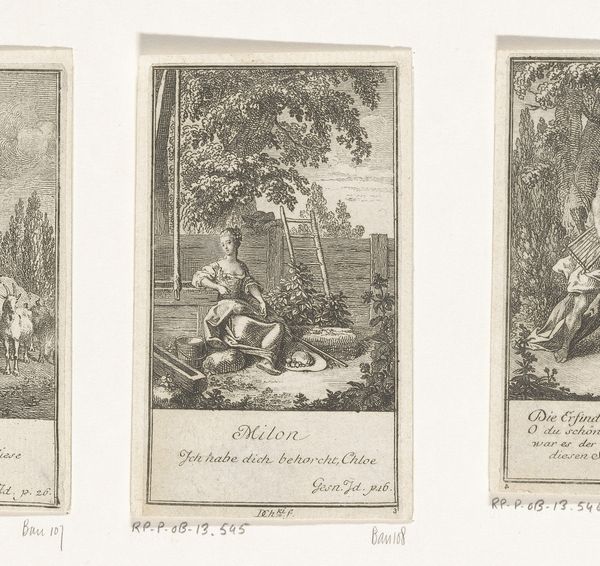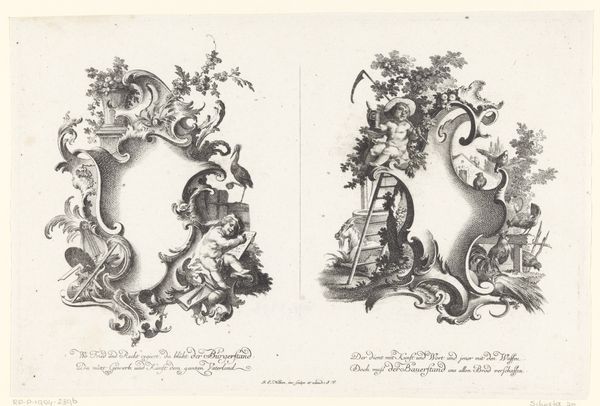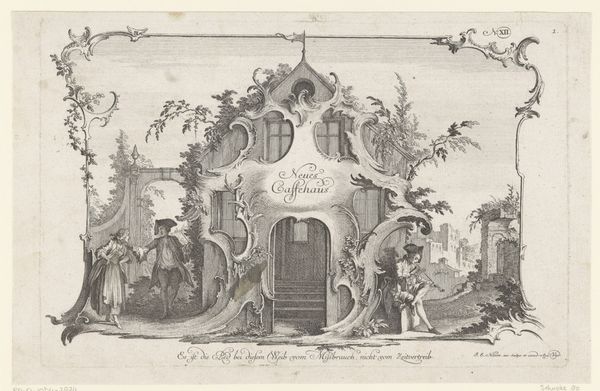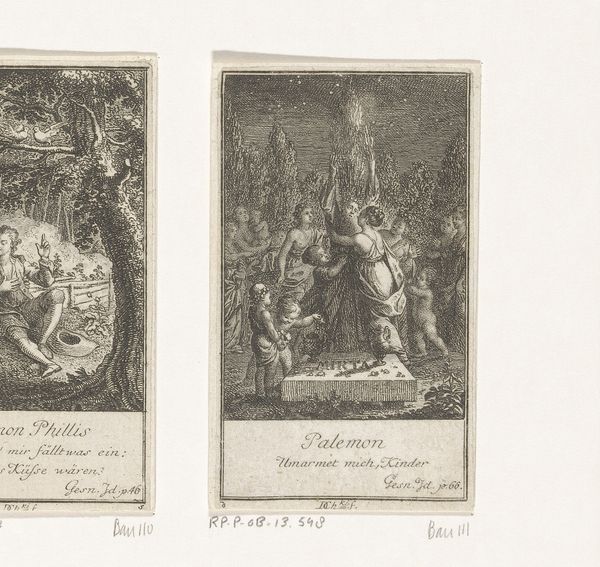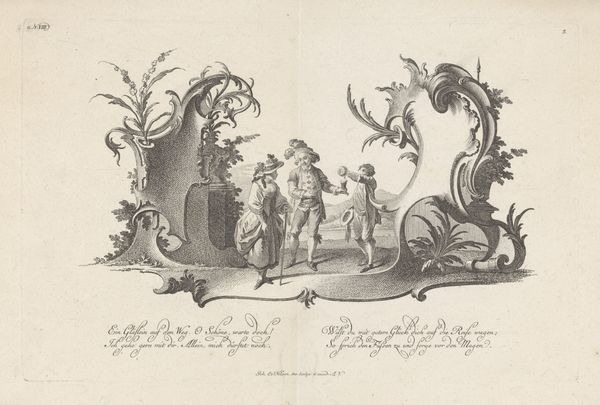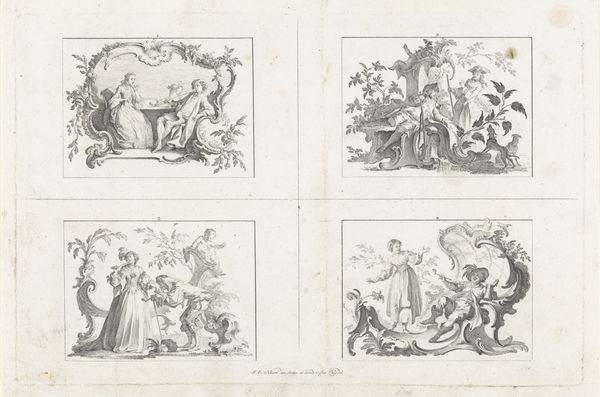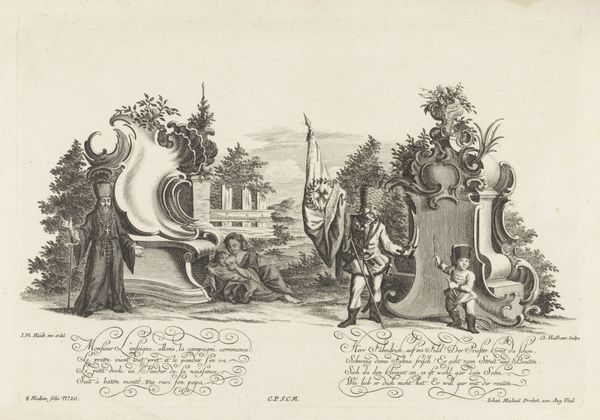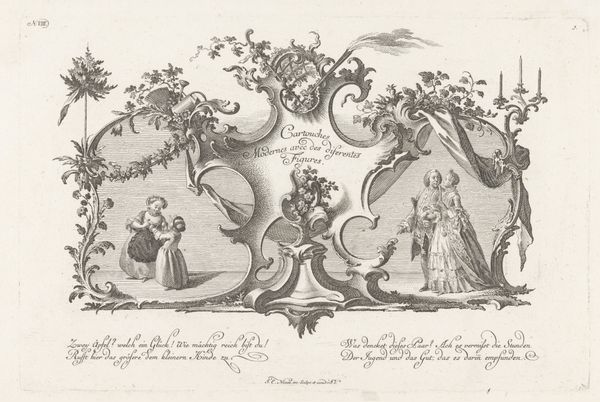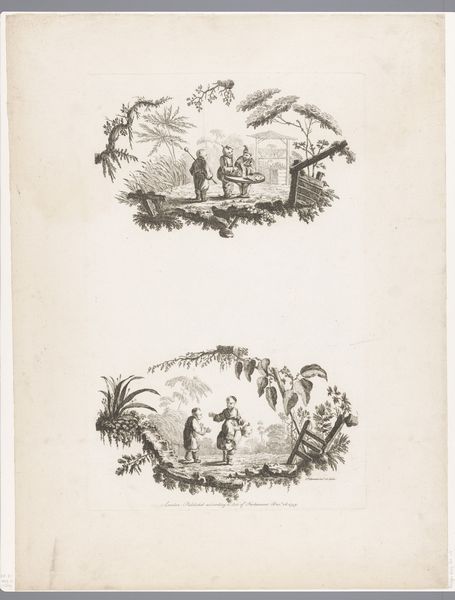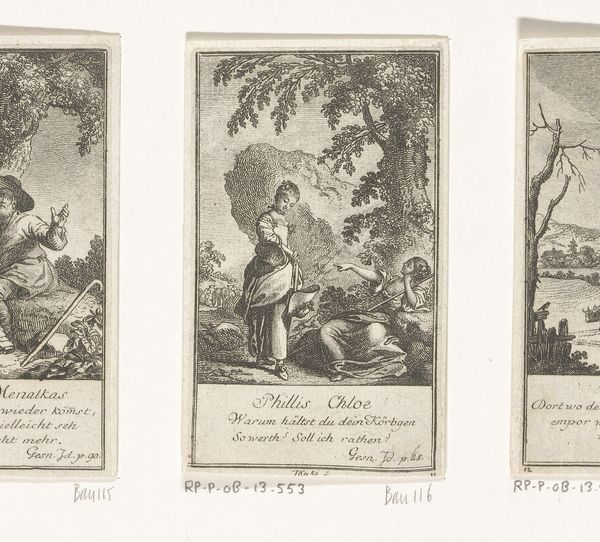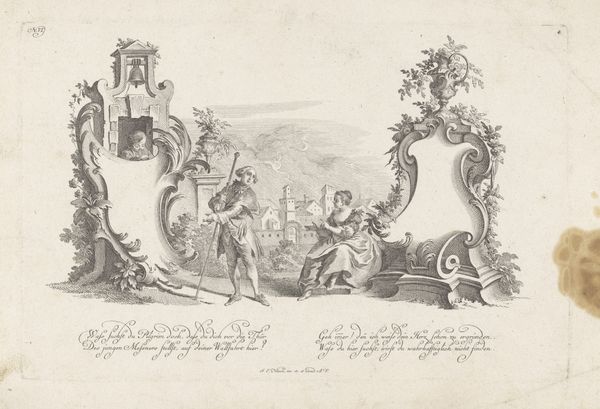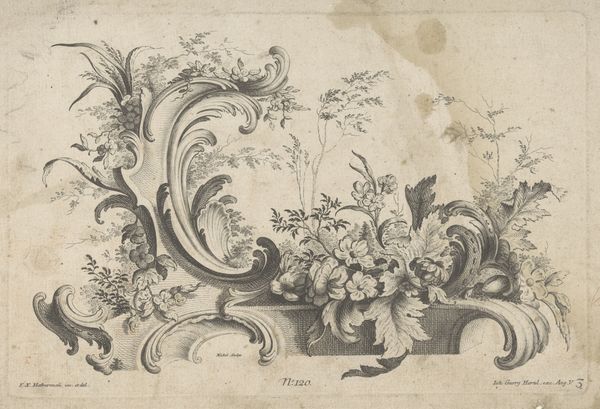
print, engraving
#
allegory
#
baroque
# print
#
old engraving style
#
landscape
#
engraving
#
rococo
Dimensions: height 191 mm, width 301 mm
Copyright: Rijks Museum: Open Domain
Editor: Here we have Johann Matthias Steudlin's print, "Avond en Nacht," dating roughly from 1720 to 1775. It’s an engraving featuring these baroque-style allegorical scenes – one representing evening, the other night. There’s a whimsical quality to it. What strikes you most about this print? Curator: Ah, a charming piece! I'm immediately drawn to the artist's embrace of allegory and the theatrical flair. The "evening" scene, for example, seems to burst forth from some countryside portal—notice how the goats seem almost inquisitive about us, their viewers. It's like peering into a rustic dream. And the contrast! The dynamism of evening with the serene repose of night… do you see how that is evoked with the figure asleep? Editor: Yes, the sleeping cherub really creates that stillness in the night scene. But I wonder about the significance of the goats and the shepherd. Curator: Exactly the kind of questions we need to be asking. Think about traditional bucolic scenes, representations of rural simplicity. But then, add to that an awareness of how "night" and "evening" functioned allegorically. Were they about rest? Moral contemplation? A reminder of time's passage? These images might well be meditations on time, and human experience! Or maybe… it was simply a playful decoration! Does one exclude the other? Not in my view! Editor: So, you see the artist balancing those deeper symbolic meanings with more decorative, lighthearted intentions? Curator: Precisely! It dances between seriousness and fancy – a tightrope walk so characteristic of the Rococo period, dont you think? A world where shepherds can philosophize, but always with a wink. Editor: That’s a helpful reminder not to take everything at face value, especially in art from this era! I’ll definitely look for more of that playfulness in other works from this period.
Comments
No comments
Be the first to comment and join the conversation on the ultimate creative platform.
